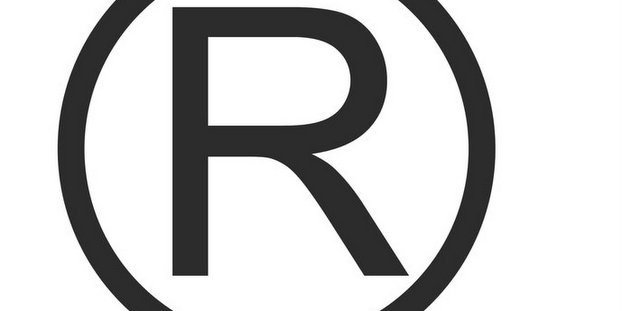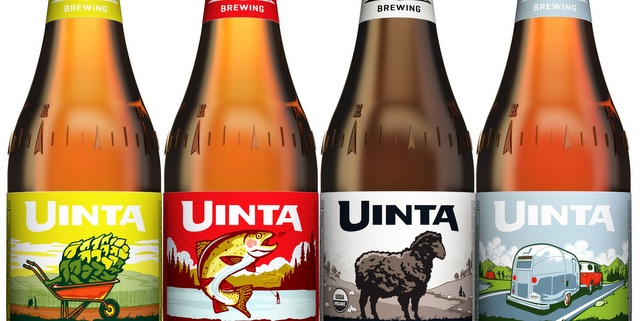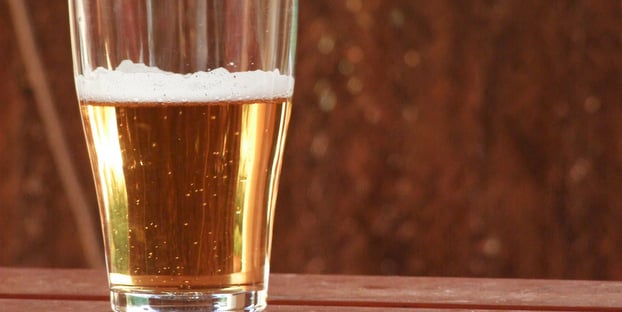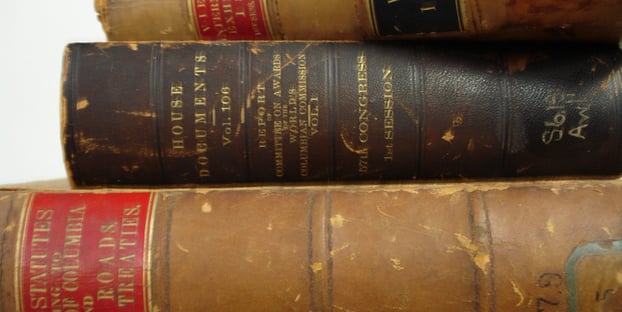
Being the savvy businessperson that you are, you have been diligently following our trademark series here at Craft Brewing Business (part 1 and part 2) and have not only chosen marks to represent your brand and passed them through the rigors of clearance but have also come to the highly prudent conclusion of registering those trademarks. That means your next step is the filing itself.
Accordingly, two options follow: First, as this paperwork can be a little tricky, you can seek the assistance of an attorney; or secondly, you could file yourself and save some cash leftover for malted barley or that organic local coffee you were eyeing for your next big stout. Do not misunderstand, we are, of course, all for keeping attorneys employed, but if you opt for filing yourself, below are some tips to make sure you get the protection that you need.
Standard character marks or stylized marks
To begin, there are two types of marks that you might file: Standard character marks or stylized marks. A standard character mark protects the word or words you are using simply typed out. That means the words are looked at without reference to font, size, color, etc. In comparison, a stylized mark is designed to protect marks that have a very particular format, such as an overarching logo that includes the mark.
A standard character mark protects the word or words you are using simply typed out. That means the words are looked at without reference to font, size, color, etc. In comparison, a stylized mark is designed to protect marks that have a very particular format, such as an overarching logo that includes the mark.If you opt for the standard character mark, then those words will be protected against those who come after — no matter how they dress it up. This is generally the wider protection. However, if there is an already existing mark that is somewhat similar to your word mark, you can increase your chances of approval if you can distinguish your mark with a highly stylized presentation and then file as a stylized mark. Keep in mind, if you go down the stylized path and are approved, you must use that same stylized mark consistently on your products.
As a last caveat on stylized marks, if your mark is very intricate and artistic, it may qualify for copyright protection. Copyright protection is not only stronger protection, but also much cheaper. Of course, the standards for qualification are much higher (so maybe consult with an attorney if you think you might qualify).
Actual use or intent-to-use?
A bona fide intent is less than market-ready but more than a really great idea that you and your buddies like to plan out during halftime of the game. The next consideration is the type of application you are going to file. We have touched on this in past articles but now is the time to put that knowledge to use. Again, we have two options: Actual use or an intent-to-use. Trademarks have to be used if they are going to be granted protection and any protection granted is on a first-come, first-served basis. So, if you file under “in use,” then the Trademark Office will ask you for two dates:
- Your first date of use
- Your first date of commerce.
At a basic level, the trademark office equates use with sales and commerce with sales that have crossed state lines. That box asking for the date of first use is actually asking for the date you first sold beer anywhere, and the box concerning commerce is the sale of beer outside of your state. You will also have to submit a specimen showing this use along with the application. A picture of your label or a keg collar on the product is usually sufficient.
Also, in regards to that specimen, know that the Trademark Office also looks out for token use. Sending a bottle of brew to your grandma on the other coast just to get across state lines does not quite cut it. On the other end of the spectrum, while sending your beer across state lines for a national competition like GABF or WBC is valid, it should be in the course of a legitimate attempt to be a nationally recognized brand. A one-off submission will look like token use to the Trademark Office, a concept that does not go over real well.
If you plan to file an “intent-to-use” application then you must have a bona fide intent. A bona fide intent is less than market-ready but more than a really great idea that you and your buddies like to plan out during halftime of the game. If you are approved for an intent-to-use application, you will be issued a “notice of allowance.” After that you have six months to actually use the mark in commerce and then go about the process outlined above, such as submitting a specimen. If six months seems like a scarily short amount of time to wrap up those bona fide plans, fear not, for you can file up to five extensions, giving you three years all told to hit the ground running.
What classes should I file in?
For step three, let’s assume that you are filing a standard character mark as in use. Now you must decide which classes you want to file in. If you are a brewery, then you are primarily in the business of beer, and beer, easily enough, falls under the purview of International Class 32 along with non-alcoholic beverages. However, you can file under multiple classes of goods and services (there are 45 all told), but it will cost you approximately $300 per class.
If keeping costs down is a concern, filing under Class 32 only will still protect you because a registration under beer will also allow you to use the mark on ancillary products — think glassware (Class 21), shirts (Class 25), and restaurant and bar services for your taproom (Class 43). If you get big, then filing in the other classes is without a doubt the better option. Take this under consideration as your business expands.
Most common mistake
Perhaps the most common mistake we see in this area is breweries filing under Class 40 for brewery services. This is incorrect and will not provide you the requisite protection for your beer. That class is for contract brewers who are in the business of brewing for others and not themselves. The trademark is therefore for the service and not the beer.
Disclaimers and words you can’t trademark
There are certain words that no one is allowed to trademark, but that’s not to say that you’re not allowed to use the words in your mark. For example, if your mark is ABC Brewing Company, it is obvious that you do not claim the exclusive right to use the words Brewing or Company. What you do claim is the exclusive right to use Brewing Company alongside ABC for the total effect of ABC Brewing Company.
That is where disclaimers come in. In the trademark application, there is an opportunity to disclaim certain portions of a mark, that is where you will list words such as brewing, company, brewery, LLC, etc. Similarly, in the realm of beers, no one brewery is allowed to own terms such as “ale” or “IPA” because other breweries are entitled to make all styles of beer and need to inform consumers about the beverage accordingly. Some such terms have only become industry parlance over time, however, and debates about the ability to trademark them rages on (see, for example, the controversy surrounding the attempt by Left Hand Brewing Co. to trademark the term “Nitro”).
If rejected, do not despair
Lastly, the trademark office is rather good about answering questions about disclaimers and the like, so don’t be afraid of their correspondence. If you start to feel overwhelmed, you can always seek the assistance of an attorney. Once you send in the application and a check, then all you have to do is wait for the Trademark Office’s response. If you are approved for an in-use application, then you are good to go and can start using that nifty ® symbol knowing that you are well protected. If, conversely, you receive a rejection, do not despair! Instead, anxiously await our next article about how to respond to such a rejection because the fight is far from over.
 Candace L. Moon is a San Diego-based attorney who has spent the last four years dedicating her law practice to the craft beer industry. She has worked with over 100 craft breweries and craft breweries-in-planning nationwide, handling business entity formation, alcoholic beverage law, contract review, trademark law, as well as other legal needs. Her clients range from Green Flash and Drake’s to Jamil Zainasheff’s Heretic Brewing. Moon’s undergraduate degree is from the University of Virginia and her juris doctorate is from Thomas Jefferson School of Law in San Diego, Calif. She has been a member of the California State Bar since 2008 and the Brewer’s Association since 2009. Contact her at [email protected]; her website, www.CraftBeerAttorney.com; or her Twitter account, CraftBeerAttny.
Candace L. Moon is a San Diego-based attorney who has spent the last four years dedicating her law practice to the craft beer industry. She has worked with over 100 craft breweries and craft breweries-in-planning nationwide, handling business entity formation, alcoholic beverage law, contract review, trademark law, as well as other legal needs. Her clients range from Green Flash and Drake’s to Jamil Zainasheff’s Heretic Brewing. Moon’s undergraduate degree is from the University of Virginia and her juris doctorate is from Thomas Jefferson School of Law in San Diego, Calif. She has been a member of the California State Bar since 2008 and the Brewer’s Association since 2009. Contact her at [email protected]; her website, www.CraftBeerAttorney.com; or her Twitter account, CraftBeerAttny.






RT @garymonterosso: Craft beer trademarks, part III: Tips for filing the paperwork http://t.co/4LLDDyfS9t
Craft beer trademarks, part III: Tips for filing the paperwork http://t.co/y1dz0SUtBo
What specific boxes do you need to check in your trademark filing application? http://t.co/M3eQpSpFln
Kerrie Thibodeau Thiffeault liked this on Facebook.
RT @rustysredrye23: “Craft beer trademarks, part III: Tips for filing the paperwork” http://t.co/T1SeWmoYd1
“Craft beer trademarks, part III: Tips for filing the paperwork” http://t.co/T1SeWmoYd1
@CraftBeerAttny @CraftBrewingBiz very useful as always Candace!
RT @CraftBeerAttny: Check out our 3rd TM installment – Tips for Filing the Paperwork on @CraftBrewingBiz #beerlaw #craftbeer http://t.co/Lu…
RT @CraftBeerAttny: Check out our 3rd TM installment – Tips for Filing the Paperwork on @CraftBrewingBiz #beerlaw #craftbeer http://t.co/Lu…
Check out our 3rd TM installment – Tips for Filing the Paperwork on @CraftBrewingBiz #beerlaw #craftbeer http://t.co/LuvJGLr40k
RT @crsimp01: Craft beer trademarks, part III: Tips for filing the paperwork http://t.co/glvaSl0Jji via @craftbrewingbiz
RT @crsimp01: Craft beer trademarks, part III: Tips for filing the paperwork http://t.co/glvaSl0Jji via @craftbrewingbiz
Craft beer trademarks, part III: Tips for filing the paperwork http://t.co/glvaSl0Jji via @craftbrewingbiz
RT @CraftBrewingBiz: Craft beer trademarks, part III: http://t.co/GVrlZFPQbr Excellent tips for filing your paperwork from @CraftBeerAttny
RT @CraftBrewingBiz: Craft beer trademarks, part III: http://t.co/GVrlZFPQbr Excellent tips for filing your paperwork from @CraftBeerAttny
RT @CraftBrewingBiz: Craft beer trademarks, part III: http://t.co/GVrlZFPQbr Excellent tips for filing your paperwork from @CraftBeerAttny